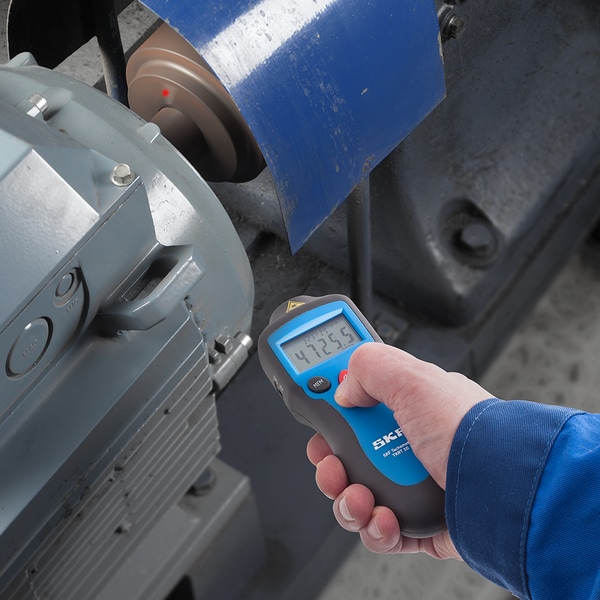Tachometer Essential: Every Little Thing You Required to Know for Accurate Readings
Tachometer Essential: Every Little Thing You Required to Know for Accurate Readings
Blog Article
The Relevance of a Tachometer in Monitoring Engine Rate and Performance in Automotive Applications
In the world of automotive engineering, the tachometer stands as a critical instrument in the motorist's arsenal, offering a straight home window right into the internal operations of a vehicle's engine. Beyond its function as a simple gauge of transformations per minute (RPM), the tachometer serves as a vital tool for enthusiasts and experts alike, using real-time understandings right into engine efficiency and health.
Significance of Keeping An Eye On Engine RPM
Checking engine RPM, or changes per min, is an essential facet of auto upkeep and efficiency analysis. Engine RPM straight associates with the speed at which the engine's crankshaft rotates, indicating how rapidly the engine is running - tachometer. By checking RPM, technicians can examine the health and wellness of the engine, discover prospective issues, and fine-tune efficiency. An unusual RPM reading might signify issues such as engine misfires, defective ignition system, or concerns with the gas delivery system. Regularly high RPM readings can suggest aggressive driving behaviors or the requirement for a greater equipment shift to boost gas efficiency.
In addition, monitoring engine RPM is crucial for performance analysis in racing and high-performance vehicles. Preserving optimum RPM degrees is important for achieving peak power outcome and velocity. Racers typically use tachometers to guarantee they are running within the perfect RPM range for maximum efficiency. In summary, keeping an eye on engine RPM is not only important for detecting concerns but additionally for optimizing engine performance in numerous automotive applications.

Advantages of Real-Time Information
In automobile applications, real-time data plays a vital duty in providing instant understandings into the performance and condition of the car. By constantly keeping an eye on different specifications such as engine rate, temperature level, gas intake, and extra, real-time information supplies countless advantages that add to boosted performance and safety and security when driving.
Furthermore, real-time information assists in performance optimization by giving immediate comments on driving routines and engine effectiveness. Vehicle drivers can readjust their behavior in real-time based on this details to accomplish far better fuel economy and lengthen the lifespan of their automobile.

Furthermore, real-time information plays a vital duty in contemporary automotive diagnostics, making it possible for specialists to promptly diagnose and attend to breakdowns. This brings about reduced downtime, lower maintenance prices, and ultimately, enhanced total vehicle dependability and long life (tachometer). By utilizing the power of real-time information, automotive stakeholders can make informed choices that favorably influence both the performance and long life of the vehicle
Effect on Equipment Shifts
The tachometer plays a critical role in optimizing equipment changes by giving real-time engine rate information to the motorist. When coming close to the redline on the tachometer, it signifies the vehicle driver to upshift to protect against over-revving the engine and creating possible damages.
Additionally, the tachometer aids in accomplishing smoother gear shifts, particularly in manual transmissions. By keeping track go to website of engine speed, drivers can execute equipment changes at the ideal RPM variety, decreasing click this link jerking activities and decreasing wear on the transmission components. This precision in equipment adjustments not only enhances driving convenience yet likewise contributes to sustain performance.
Enhancing Gas Performance
Given the crucial function the tachometer plays in optimizing gear shifts for performance and engine wellness, it directly contributes to optimizing fuel performance in vehicle applications. By supplying real-time comments on engine rate, the tachometer helps drivers in keeping the most reliable RPM variety for gas economy. When vehicle drivers constantly check the tachometer and readjust their driving behaviors appropriately, they can stay clear of unnecessary gas consumption created by over-revving or lugging the engine.
In addition, the tachometer helps vehicle drivers identify the most fuel-efficient gear to be in at any type of provided moment, protecting against the engine from working more challenging than necessary. This is especially critical throughout acceleration and travelling, where remaining in the right equipment can significantly affect fuel performance. Additionally, the tachometer can inform vehicle drivers to prospective mechanical problems that can be negatively affecting gas economy, such as a slipping clutch or a stopped up air filter. To conclude, the tachometer works as an important tool in boosting gas efficiency by promoting ideal driving routines and recognizing locations for improvement in the vehicle's performance.

Taking Full Advantage Of Engine Longevity
The tachometer's function in monitoring engine rate and performance is crucial in guaranteeing the durability of automobile engines. Checking the tachometer enables vehicle drivers to stay within the advised RPM variety for their lorry, avoiding unneeded stress on the engine and expanding its lifespan.

Conclusion
Finally, the tachometer Clicking Here plays a vital role in checking engine speed and efficiency in automobile applications. By offering real-time information on RPM, it permits efficient equipment changes, improved gas effectiveness, and made the most of engine long life. This tool is crucial for preserving optimum engine performance and making sure the overall performance of a vehicle.
Report this page